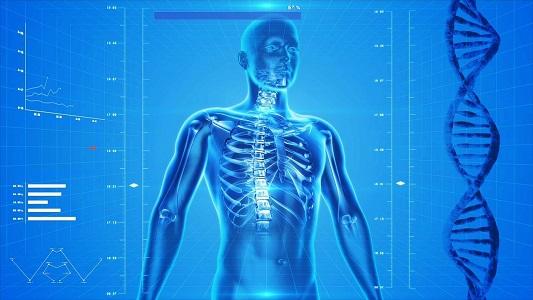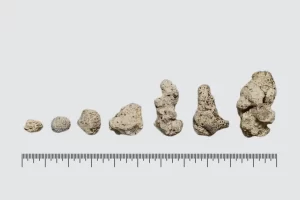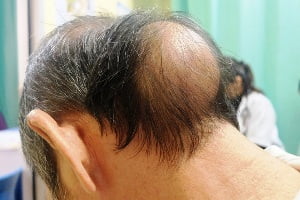Do MOTS-c, BPC157, and AOD9604 Increase Bone Mineral Density?
- Updated on: May 29, 2024
- 3 min Read
- Published on Mar 13, 2023

Do MOTS-c, BPC-157, and AOD 9604 increase bone mineral density? To find out the answer to this question, keep reading!
Osteoporosis is the most widespread systemic skeletal system disease, leading to increased bone fragility and sensitivity to fractures. Healing of fractures in osteoporotic test subjects is often slowed and impaired compared to non-osteoporotic models because of microarchitectural damage in bone tissue. Menopause, age, metabolic illnesses, and pharmacological therapy are common causes of osteoporosis, although the underlying cellular and molecular processes are poorly understood.
Three peptides (BPC-157, AOD 9604, MOTS-c) have recently been found to have therapeutic properties for such illnesses in various animals.
An Introduction To The BPC-157 Peptide
BPC-157 is a synthetic amino acid chain of the naturally occurring Body Protection Complex (BPC) found in human stomach juice. BPC-157 has been demonstrated to repair tissues in the gastrointestinal tract (GIT), tendons, ligaments, the brain, and bones and to aid the healing of a wide variety of wounds and burns. It also acts as an anti-inflammatory and protects and promotes the healing of the liver in response to toxic stress.
Osteoporosis and BPC-157
There is a need for a gastric peptide with osteogenic activity since gastric removal, either partial or whole, is associated with an increased risk of osteoporosis, metabolic aberration, and fracture. BPC-157, a new pentadecapeptide, has been demonstrated to promote fracture and wound healing in rats and have an angiogenic impact.
Each control rabbit had a segmental osteoperiosteal bone defect that did not entirely mend for 6 weeks, allowing researchers to observe the effects of BPC-157 when administered to the bone defect continuously. The rabbits were examined at 2-week intervals. In order to provide a fair comparison, rabbits were given their autologous bone marrow. As usual therapy, the bone defect was filled with an autologous cortical transplant shortly after its creation. Injured animals that were injected with saline served as controls.
It has been shown that the pentadecapeptide BPC-157 speeds up the recovery time for segmental bone abnormalities. For instance, researchers showed the effect of pentadecapeptide BPC-157 to correspond to enhancement after local application of bone marrow or autologous cortical graft when evaluated by radiographic assessment. The callus surface, microphoto densitometry, quantitative histomorphometry, or quantitative histomorphometry.
An Introduction To The AOD-9604 Peptide
Bone health is improved by the peptide AOD-9604, which is essentially a fragment of GH without proliferative effects. A GH molecule may be broken down into its 8 percent fragment, stimulating the IGF-1 and direct cellular pathways. The IGF-1 pathway, a significant contributor to insulin resistance, is unaffected by AOD-9604. Increasing numbers of researchers are turning to this medication to alleviate localized discomfort caused by tendinitis and osteoarthritis in their test subjects.
Treatment of Osteoporosis with AOD-9604
In a collagenase-induced knee osteoarthritis (OA) rabbit model, researchers from South Korea examined the effects of AOD-9604 with and without hyaluronic acid (HA).
Three-hundred-and-twenty-two adult New Zealand white rabbits had collagenase type II twice in each knee joint. Injectable saline was given to Group 1, researchers gave HA to Group 2, AOD 9604 was given to Group 3, and researchers gave a lower dose of AOD 9604 to Group 4 in addition to HA. In order to determine how far along cartilage degradation had progressed, morphological and histological observations were used. Eight weeks following the first collagenase application, experts also recorded the level of lameness.
An Introduction To The MOTS-c Peptide
There are 37 genes encoded by human mitochondrial DNA (mtDNA), including 2 ribosomal RNAs (rRNAs), 22 transfer RNAs (tRNAs), and 13 polypeptide subunits of the electron transport chain (ETC) complexes. In recent years, it has been proven that the rRNA loci include tiny open reading frames (ORFs) that may be transcribed and translated into short peptides with biological activity, which are known as mitochondrial-derived peptides (MDPs). MOTS-c is a 16-amino-acid (aa) peptide encoded by cells’ mitochondria at the 12S rRNA locus of mitochondrial DNA (mtDNA).
In the face of metabolic stress, MOTS-c can translocate into the nucleus and regulate adaptive nuclear gene expression. Because of this, the peptide may increase mitochondrial genome expression to increase resistance to metabolic stress. To stimulate mitochondrial biogenesis, upregulation of these genes is necessary. MOTS-c blocks the methionine-folate cycle resulting in purine synthesis, an increase in PCG-1α (a significant regulator of energy metabolism), and AICAR (5-Aminoimidazole-4-carboxamide ribonucleotide) accumulation which activates AMPK (5′- adenosine monophosphate-activated protein kinase).
Association between MOTS-c and Osteoporosis
A few investigations have only documented the TGF-/SMAD signaling pathway’s role in inducing osteoblasts to produce type I collagen. The research aims to examine the function of MOTS-c in the production of type I collagen in osteoblasts, which gives fresh proposals for identifying the pathophysiology and therapy of osteoporosis.












